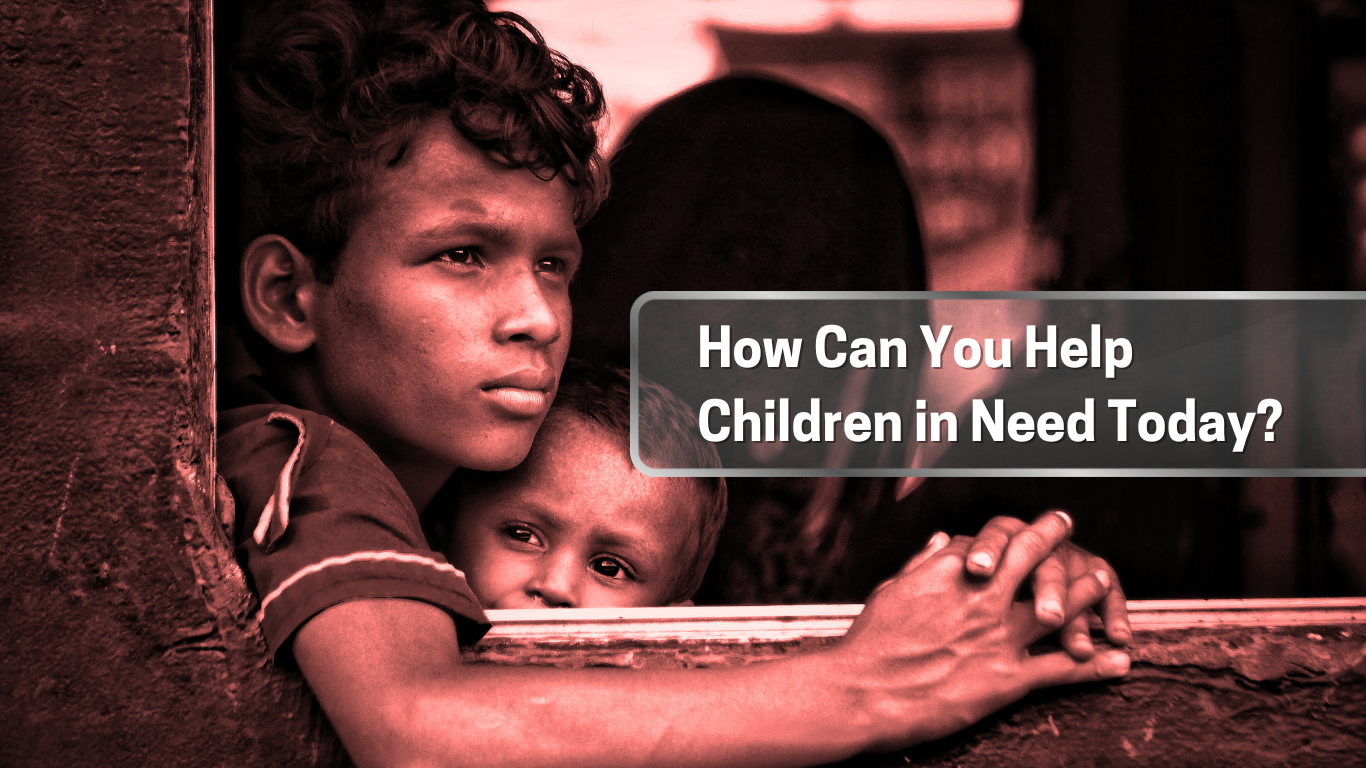Children are the future, yet millions around the world face daily struggles due to poverty, lack of access to education, and other challenges. In this blog post, we’ll delve into the ways you can make a difference in the lives of children in need, both locally and globally.
I. Understanding the Issue
A major issue affecting millions of children worldwide is child poverty. It is important to understand the scope of this problem, the factors contributing to children in need, and the impact it has on society as a whole.
A. The Scope of Child Poverty
Child poverty refers to children living in households with income below the poverty line. According to recent statistics, over 1 billion children worldwide are deprived of at least one necessity of life, such as adequate nutrition, safe housing, or access to education.
B. Factors Contributing to Children in Need
Multiple factors contribute to children being in need, including economic inequality, lack of access to education and healthcare, family breakdown, and community violence. These factors create a cycle of poverty that is difficult to break without intervention.
C. Impact on Society
The impact of child poverty extends beyond individual children and families, affecting society as a whole. Children in need are more likely to experience poor health outcomes, lower educational achievement, and increased likelihood of engaging in criminal activities.
II. Taking Action Locally
It is crucial to take action at the local level to support children in need within our communities. There are various ways individuals can make a difference, such as volunteering at local organizations, donating goods and clothing, and participating in mentoring programs for at-risk youth.
A. Volunteering at Local Organizations
Volunteering at local organizations that support children in need is a great way to give back to the community. Whether it’s helping out at a homeless shelter, tutoring children in an after-school program, or organizing a fundraising event, every little bit helps.
B. Donating Goods and Clothing
Donating goods and clothing to organizations that serve children in need can make a significant impact on their lives. By providing essentials like food, clothing, and school supplies, you are helping to alleviate some of the burdens that these children and their families face.
C. Mentoring Programs for At-Risk Youth
Mentoring programs for at-risk youth provide valuable support and guidance to children who may not have positive role models in their lives. By becoming a mentor, you can make a lasting impact on a child’s life and contribute to their overall well-being.
III. Supporting Global Initiatives
In addition to local efforts, supporting global initiatives that address child poverty on a larger scale is essential. This can be done through donating to international charities, sponsoring a child in need, and participating in global advocacy campaigns.
A. Donating to International Charities
Donating to reputable international charities that focus on child welfare is a direct way to support children in need around the world. These organizations work on the ground to provide essential services and resources to vulnerable children and families.
B. Sponsoring a Child in Need
Sponsoring a child in need through a reputable organization can make a significant impact on their life. By providing financial support, you are helping to ensure that a child has access to education, healthcare, and other necessities that can break the cycle of poverty.
C. Participating in Global Advocacy Campaigns
Participating in global advocacy campaigns that focus on child welfare issues can help raise awareness and mobilize action on a larger scale. By adding your voice to these campaigns, you are contributing to the collective efforts to improve conditions for children worldwide.
IV. Advocating for Policy Change
Advocating for policy change is crucial in addressing the root causes of child poverty and creating systemic solutions. This can be done through writing to elected officials, joining community advocacy groups, and educating others on child welfare issues.
A. Writing to Elected Officials
Writing to elected officials about the need for policy changes that benefit children in need can have a meaningful impact. By advocating for increased funding for social programs, improved access to healthcare and education, and other supportive policies, you are helping to create a better future for vulnerable children.
B. Joining Community Advocacy Groups
Joining community advocacy groups that focus on child welfare issues can amplify your voice and influence policy decisions at the local level. By collaborating with like-minded individuals and organizations, you can advocate for changes that benefit children in your community.
C. Educating Others on Child Welfare Issues
Educating others on child welfare issues is essential in raising awareness and building support for policies that benefit children in need. By sharing information, resources, and personal stories, you can inspire others to take action and make a difference in the lives of vulnerable children.
V. Fostering Long-Term Solutions
Supporting long-term solutions that address the root causes of child poverty is vital in creating lasting change. This can be done through supporting education programs, promoting sustainable development projects, and engaging in child rights advocacy.
A. Supporting Education Programs
Supporting education programs that provide quality schooling and resources to children in need can help break the cycle of poverty. By investing in education, you are empowering children to have better opportunities for a brighter future.
B. Promoting Sustainable Development Projects
Promoting sustainable development projects that focus on improving infrastructure, healthcare, and economic opportunities can create long-term benefits for children and families in need. By supporting projects that prioritize sustainability and community empowerment, you are contributing to lasting change.
C. Engaging in Child Rights Advocacy
Engaging in child rights advocacy is essential in ensuring that children’s voices are heard and their rights are protected. By advocating for policies that prioritize children’s well-being, safety, and development, you are working towards a more equitable and just society for all children.
Summary
In conclusion, there are various ways individuals can help children in need today, whether through local actions, global initiatives, policy advocacy, or long-term solutions. By understanding the issue, taking action, advocating for change, and supporting sustainable projects, we can make a meaningful difference in the lives of vulnerable children. It is possible to create a world where every child has the opportunity to thrive and achieve their full potential if we work together.


